INVISALIGN CLEAR ALIGNERS – PLEASANTON, CA
A Clear Path to a Straighter Smile
Metal braces may not be what your teen envisions when learning they need orthodontic treatment. Instead, they prefer Invisalign clear aligners that are more discreet. Instead of capturing the attention of others because of all the metal in their mouth, they can walk with greater confidence knowing their teeth are on the right path. Discover how Invisalign in Pleasanton can help your child take the next step toward a straighter smile by calling to schedule an appointment.
Why Choose Main Street Pediatric Dentistry and Orthodontics of Pleasanton for Invisalign Clear Aligners?
- No-Mess Digital Dental Impressions
- Financing Is Available
- Tailor-Made Treatment Plans to Meet Patients’ Needs
How Invisalign Works

Invisalign is a clear aligner system that is far more discreet than traditional braces. Relying on customized trays that are made from clear plastic, they follow your teen throughout the treatment process, taking the shape of their smile as it progresses toward better alignment.
Worn 20-22 hours each day, your teen will be required to swap them out every 1-2 weeks so that their teeth continue to move. They will continue this process until the series is complete. In just 12-18 months, on average, your teen can expect to see a new smile that is healthier, looks beautiful, and helps them to project much-needed confidence.
Benefits of Invisalign
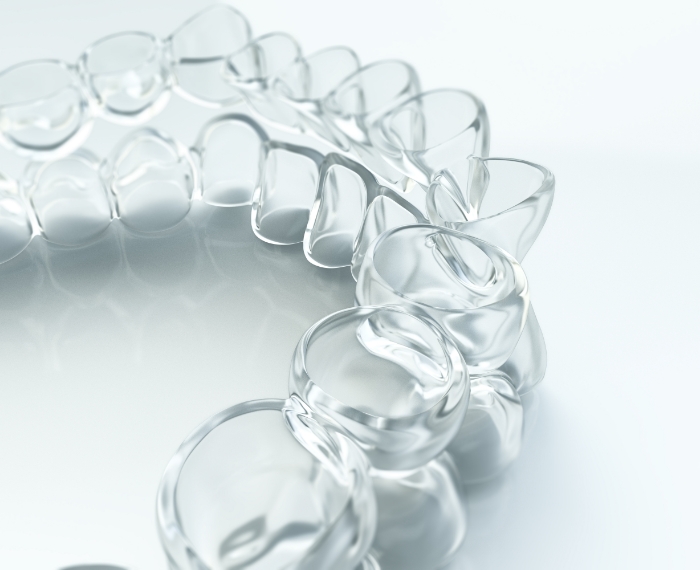
Orthodontic treatment of any kind is highly beneficial, especially if your child is suffering from oral health issues. That said, there are several perks that cannot be attained with traditional braces. To learn a few of the many reasons Invisalign continues to be so popular year after year, read on!
The Trays Are More Comfortable

A common complaint with traditional braces is that they aren’t comfortable. If that’s something your child is concerned about, we have good news: Invisalign aligners are considerably more comfortable because they do not have protruding brackets that rub against gums, lips, and the tongue. Instead, they are crafted from smooth plastic and designed to fit snugly against teeth, ensuring that there isn’t any soft tissue irritation during the teeth-straightening process.
There Aren’t Any Metal Components

Is your child less than thrilled about the idea of wearing noticeable, metal braces? Then schedule an appointment with us to find out if they are a candidate for Invisalign; there is no spotlight to shine while wearing Invisalign because they are virtually invisible. In other words, unless someone is extremely close or knows to keep an eye out for them, it’s unlikely that anyone will notice the trays.
You Can Eat the Foods You Love

You read that right: there aren’t any dietary restrictions with Invisalign! That’s because the aligners are removable, so there isn’t the same risk of an orthodontic emergency or the same concern about food getting stuck underneath brackets and wires. All we ask as your child’s dental team is that sugary and starchy snacks are kept to a minimum in an effort to protect their teeth and gums from harm.
Brushing and Flossing Are Easy
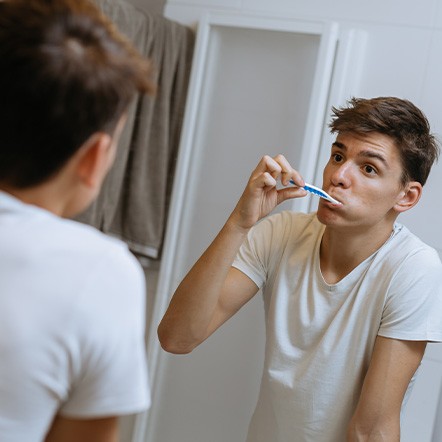
As a parent, you know how difficult it can be to get your child to brush and floss consistently. Unfortunately, traditional braces often make this worse because the brackets and wires are difficult to maneuver around. Don’t worry – that’s not the case with Invisalign! Since the aligners are removable, your child doesn’t need to adopt a cumbersome oral hygiene regimen during the teeth-straightening process.
The Aligners Can Be Removed for Special Occasions

As we mentioned above, Invisalign aligners are basically invisible, so no unwanted attention will be drawn to your child’s smile. That said, as long as they wear their aligners for 20+ hours a day, they can be removed for special occasions. For example, your child can take them off before taking their driver’s license photo or before their senior pictures!
The Average Treatment Timeline Is Shorter
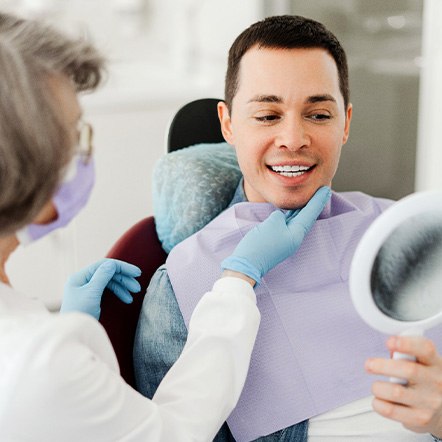
Last, but certainly not least, the average treatment timeline with Invisalign is shorter. While traditional braces often take two or more years, clear aligners usually deliver results in just 12-18 months. Plus, the trays are see-through, so your child will be able to see the improvements along the way, keeping them motivated to follow the guidelines provided, like wearing their aligners for 20+ hours a day.
Who Can Invisalign Help?
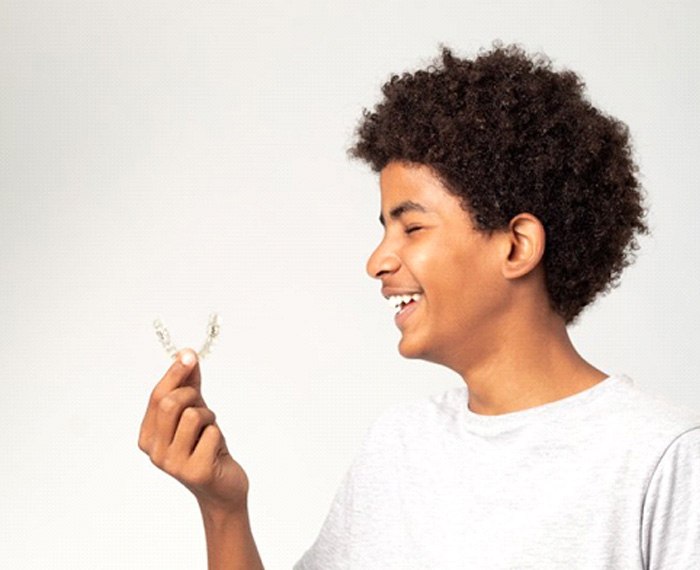
If your teen is experiencing any type of bite misalignment, it can lead to wear and tear on the enamel as well as chronic jaw pain if left untreated. With Invisalign, the clear aligners work to shift teeth so that they align more beautifully and comfortably, creating a more harmonious movement between the upper and lower arches that minimizes risks of injury and decay. Invisalign can be used to treat a range of alignment issues such as those listed below.
Crowded Teeth
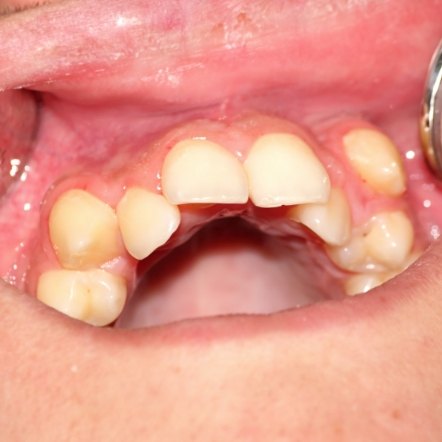
When the teeth are too close together, it can make eating, speaking, smiling, and oral hygiene more difficult. Crowding can become worse with age, leading to issues like tooth decay, gum disease, and TMJ issues. Our orthodontist may recommend tooth extraction depending on the severity of overcrowding, but Invisalign can help to create additional space so that teeth no longer rest on top of each other, creating a healthier arrangement that can even boost confidence.
Gaps Between Teeth
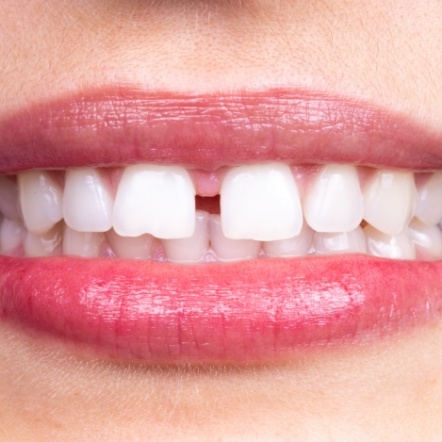
Too much space can also be dangerous, as bacteria and food particles can easily become trapped between teeth when eating. These gaps can be caused by the teeth being too small, the jaw being too large, thumb-sucking or tongue-thrusting during childhood, and a range of other natural factors. Invisalign clear aligners bring teeth closer together so that gaps close and smiles appear more cohesive and beautiful. The teeth also become easier to clean and harder to injure.
Overbite
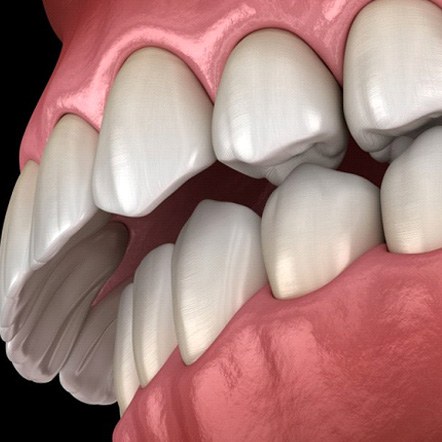
If a patient’s top teeth protrude too far over the lower arch, they have an overbite. This sort of alignment issue can cause speech issues, jaw pain, uneven wear and tear on the teeth, and difficulty when closing or opening the mouth. It also leaves the top teeth more exposed, which can put them at a higher risk for injury.
Underbite
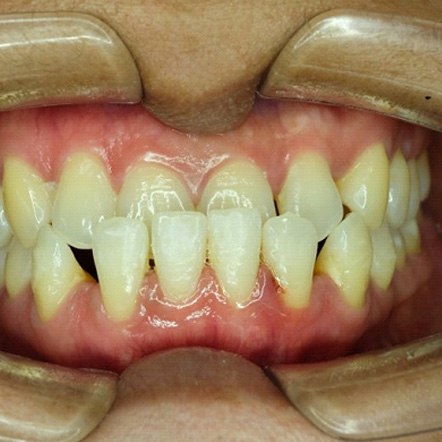
If a patient’s bottom teeth protrude slightly past or bite evenly with their top teeth, they have an underbite, which can result from genetics, oral trauma, or habits like thumb-sucking in childhood. An unaddressed underbite can lead to a range of issues such as a higher risk of sleep apnea, difficulty when speaking or chewing, or mouth breathing. While it’s often easier to resolve underbites in younger patients, it’s still important to address them in adults. To treat an underbite, Invisalign clear aligners may require the use of rubber bands or other attachments to adjust the teeth’s alignment properly.
Crossbite
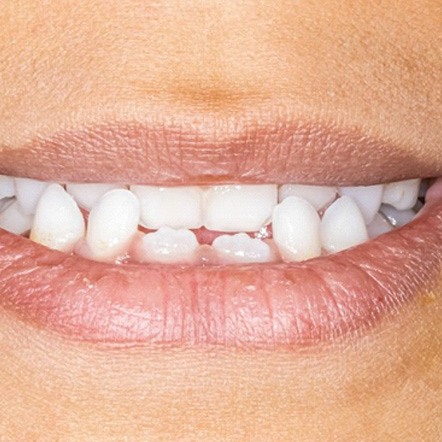
Crossbites happen when the bottom teeth rest slightly in front of the upper teeth, and they are often caused by genetics, poor oral habits, or early loss of baby teeth. While Invisalign can treat this issue, doing so may require the use of elastics or other accessories to help the jaw shift into a better position. Untreated crossbites can lead to long-term issues such as jaw pain, speech difficulties, headaches, bruxism, facial asymmetry, and an increased risk of gum disease and tooth decay, all of which can negatively impact a patient’s self-confidence.
Open Bite
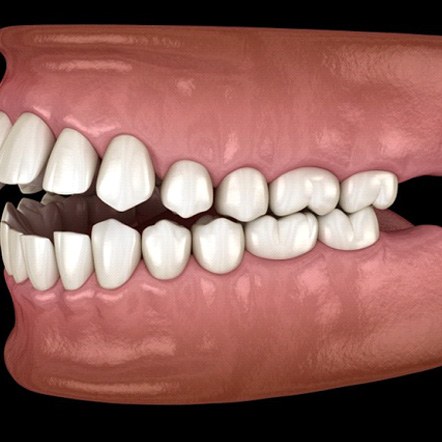
If a patient’s top and bottom teeth do not overlap or touch when their mouth is closed, they have an open bite. This issue often results from poor bone development or thumb or pacifier-sucking habits as a child. Open bites can increase the risk of dental damage while making it difficult to pronounce certain words or sounds. Invisalign clear aligners can correct this bite pattern so that the teeth overlap properly to reduce the risk of enamel wear and other issues.
Living with Invisalign Aligners

Invisalign is well known for its removable, clear, and hassle-free aligners. However, like any orthodontic treatment, there is still a level of responsibility that’s required to stay on-track. With this in mind, keep reading for an inside look at what life with Invisalign looks like.
Wearing Your Trays
Wearing your trays for 20 hours a day or more is crucial. Otherwise, you will quickly fall off-track with your treatment plan. That’s why we recommend getting in the habit of only taking your aligners off when it’s absolutely necessary. You should also use the stopwatch on your phone to track your aligner-free time while you find a routine that works for you.
Tip: Wear your aligners to your check-in visits, even if you are starting a new set of aligners afterward!
Cleaning Your Aligners
We have good news: keeping your aligners clean and clear doesn’t require any special products; it just requires consistency. More specifically, consistently rinse them with clean, cool water when you take them off, and use a damp, soft-bristled toothbrush to clean them before you put them back on.
Tip: Bring your aligners with you to your check-in visits so your dental team can clean them too!
Eating & Drinking
Eating seasonal fruits, fresh vegetables, and other nutrient-dense foods will reduce your risk of common oral health problems, like cavities, so do your best to incorporate them into your daily diet. Simultaneously, cut back on potato chips, peanut brittle, and other sugary and starchy foods that increase your risk of dental trouble.
Tip: Drink plenty of water to stay hydrated and prevent dry mouth!
Losing or Damaging a Tray
Losing or damaging a tray can dramatically increase your risk of treatment plan delays. That’s why it’s so important to do what you can to protect your aligners, like using cold water instead of hot water. If you do accidentally misplace them or they get damaged in a bad fall, then don’t hesitate to contact us so we can begin the process of having them repaired or replaced.
Tip: Put your aligners in their designated case anytime you aren’t wearing them!
Scheduling Routine Check-Ins
Every 6-8 weeks, you’ll come to our office for a progress visit. After checking in about your experience and answering any questions you have, we will take new scans of your teeth so we can monitor their movement. If they are moving as anticipated, then we will provide you with your next set of aligners and schedule your next appointment – you should be in and out of our office in 20 minutes or less!
Tip: Wear your aligners to your appointment!
Understanding the Cost of Invisalign

Like many parents, you may be interested in learning about the cost of Invisalign before signing on the dotted line. Don’t worry – we can provide you with an estimate of the price at your teen’s consultation. Unfortunately, however, we can’t give you a number here. After all, there are several factors that impact your child’s treatment plan, including the complexity of their case. If you want to learn a bit more on the topic, you can read on. Or, you can reach out to us to schedule an appointment!
Factors That Affect the Cost of Invisalign
In order to determine the cost of your teen’s Invisalign treatment, we need to first determine:
- If any preliminary treatments are needed, like a tooth-colored filling or root canal
- The severity of the orthodontic problems present
- How many aligners are needed
- If rubber bands, buttons, and other orthodontic accessories are necessary
- The type of retainer needed
Invisalign vs. Mail-In Aligners: Which Costs More?
Have you seen the commercials or the ads on social media for mail-in aligners? Sadly, they draw lots of prospective patients in with their messaging about the lower price. What they don’t include, however, is that they bypass the initial exam, they rely on DIY impressions, they usually aren’t overseen by a licensed dental professional, and they don’t have support from professional organizations, like the American Dental Association. In other words, even if the upfront price is cheaper, there is a good chance you’ll end up spending more money over time because of the complications that often arise.
Does Dental Insurance Cover Invisalign?
Oftentimes, dental insurance providers will cover a portion of the cost of orthodontic treatment if it’s medically necessary. If you’re not completely familiar with your teen’s benefits, don’t worry – we’d be more than happy to help you understand the ins and outs of your coverage. If Invisalign is partially covered, then we will provide you with an estimate of your out-of-pocket expenses and file the paperwork so the entire process is as stress-free as possible.
Options for Making Invisalign Affordable
Don’t have dental insurance? Don’t let that stop you from scheduling a consultation with us! After all, that’s just one of the financial solutions we offer. CareCredit flexible financing is also available for families who are uninsured and don’t want to pay for the entire cost of Invisalign in one lump sum. Instead, this trusted third-party financier allows you to space out the cost of teeth-straightening treatment into smaller, more manageable monthly chunks.
We know that the cost is something that families tend to worry about. That’s why we’re here to provide transparent pricing and help you navigate all of the financial solutions available to you. Simply put, don’t hesitate to reach out to us if you want to learn more about the cost – we’re here to help!
Invisalign FAQs
What Does Invisalign Look Like?
Since Invisalign clear aligners are made from clear plastic, they are entirely visible outside of the mouth but incredibly difficult to detect when worn over the teeth. All patients need to keep their aligners clean, clear, and discreet is a proper routine of hygiene and maintenance. This means that, unlike traditional braces which are clearly visible on the smile, Invisalign can straighten a patient’s teeth without compromising their appearance. However, some patients may require attachments, buttons, or elastics that are more visible than the clear aligners since they are not made from clear plastic.
How Long Does Invisalign Take?
The duration of your Invisalign treatment depends on a variety of factors such as the severity of your alignment issues and how well you comply with your treatment plan. It usually takes between twelve and eighteen months to complete an Invisalign treatment, but patients with mild misalignments may need only six. Treatments that take eighteen months are still four months shorter than the average treatment with traditional braces. Complying with your treatment and seeing your dentist regularly can help your Invisalign process be as speedy and complication-free as possible.
Can You Eat with Invisalign?
One of the major selling points for Invisalign is that the clear aligners are completely removable, allowing patients to take them out during meals. While this means that you can eat whatever you like while wearing Invisalign, it’s important to remember that your clear aligners are not designed to withstand the pressure of chewing, meaning that eating while wearing them can damage them. When eating or drinking anything but water, remove your Invisalign aligners to keep them in good shape and protect your teeth from unnecessary pressure. You should also take care to store your clear aligners in a safe place when not wearing them to prevent them from being injured or thrown away, and we recommend carrying a special case for this purpose.
Does Invisalign Give You a Lisp?
Since Invisalign clear aligners add volume to your teeth, they can affect the way air flows around them during speech. You can expect an initial adjustment period when you first start wearing Invisalign, and this may lead to you developing a slight lisp. While not every patient will experience this issue, a lisp happens when the tongue is not placed properly during speech. While this temporary lisp can be annoying, it will diminish quickly over the coming weeks as you get more practice. If you wish to get rid of your lisp more quickly, a great way to do it is to read your favorite book aloud and repeat any words you have trouble with until you get the hang of them.
